Panasonic Lumix DMC-GH1
-
-
Written by Gordon Laing
Panasonic GH1 vs Nikon D90 vs Canon SX1 IS
Panasonic Lumix DMC-GH1 results continued…
Real-life resolution
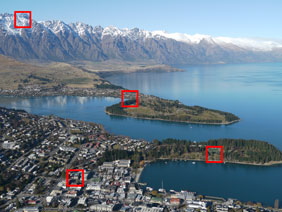 |
To compare real-life performance we shot the same scene with the Panasonic Lumix DMC-GH1, Nikon D90 and the Canon PowerShot SX1 IS within a few moments of each other using their best quality JPEG and base ISO settings. The lenses on each camera were adjusted to deliver the same vertical field of view. The image left was taken with the Panasonic Lumix DMC-GH1 at 100 ISO with the G VARIO 14-140mm kit lens at 19mm f5.6; the original Large Fine JPEG measured 6.73MB. The crops are taken from the areas marked by the red squares and presented here at 100%. |
Note, the Nikon D90 captures wider 3:2 aspect ratio images, so by matching the vertical field of view, we’re effectively treating the DSLR here as a 10.8 Megapixel camera, delivering 4:3 shaped images. Note, we shot this scene at every aperture setting on the GH1, and the f5.6 version slightly preferred over f8, although in the studio resolution tests on the next page, there was no measurable difference between the f5.6 and f8 samples.
With the Lumix GH1 set to record 4:3 images, it has a small theoretical resolution advantage here, sporting 12 effective Megapixels. But judging from the crops below, there’s no more real-life fine detail resolved in its favour – indeed there’s a slight softness to the images which you’ll see across our results and gallery pages, which we believe is mostly attributable to the G VARIO 14-140mm kit lens.
Like most super-zoom lenses, the optical quality rarely matches that of a shorter range, although by boosting the sharpening either in-camera or later, you can retrieve some fine details.
In our tests we also found the 14-140mm became softer in the corners too, which is why the mountain ridge crop in the first row below looks less sharp than the other two cameras. You’ll also notice the Panasonic and Nikon crops are bereft of coloured fringing here, thanks to in-camera digital reduction that’s absent on the Canon super-zoom.
Moving onto the second row of crops, taken from the middle of the image, all three cameras are showing plenty of fine detail, and the differences you’re seeing are mostly down to the sharpness of their optics and image processing.
The GH1 once again comes up a little soft, while the Canon SX1 IS is applying the greatest sharpening, which in turn has revealed some noise grain even at the lowest sensitivity.
It’s a similar story in the third and fourth rows of crops: the GH1 looks a little soft, while the Canon SX1 IS has arguably over-sharpened and revealed the inherent noise of a camera with a small sensor. The Nikon D90 has delivered the best-looking crops here, although in terms of actual detail resolved, it’s roughly equivalent to the GH1.
So what happens if you shoot in RAW on the GH1 and apply greater sharpening? Can the softness seen here be cut-through, or is it an inherent problem with the super-zoom kit lens? Find out by scrolling to the bottom of this page or head straight over to our results from a controlled environment in our Lumix GH1 Studio Resolution page.
Panasonic Lumix DMC-GH1 |
Nikon D90 |
Canon PowerShot SX1 IS | ||
 |
 |
 | ||
f5.6, 100 ISO |
f8, 200 ISO |
f4, 80 ISO | ||
 |
 |
 | ||
f5.6, 100 ISO |
f8, 200 ISO |
f4, 80 ISO | ||
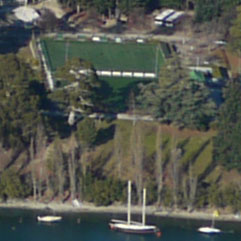 |
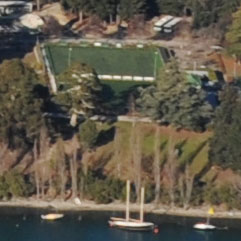 |
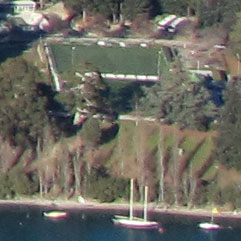 | ||
f5.6, 100 ISO |
f8, 200 ISO |
f4, 80 ISO | ||
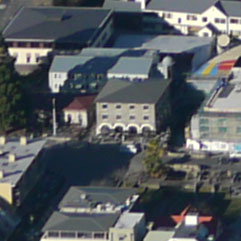 |
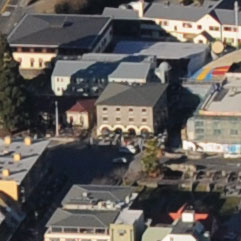 |
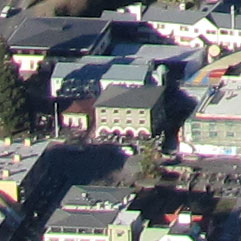 | ||
f5.6, 100 ISO |
f8, 200 ISO |
f4, 80 ISO |
Panasonic Lumix DMC-GH1: JPEG versus RAW
We photographed the scene here in the Lumix GH1’s RAW plus Fine JPEG mode, allowing us to directly compare images created from exactly the same data. Below are 100% crops taken from the original JPEG file alongside the RAW version, processed with the supplied Silkypix Developer Studio 3.0 SE; by default, the Unsharp Mask is set to zero in SilkyPIX, which unsurprisingly delivers a very soft result, so here we’ve increased the amount to 100 in order to reveal fine details. At first glance, the sharpened RAW file appears to solve the softening seen above – it’s cut through the ‘haze’ to deliver a punchier result with crisp details. But look a little closer and it’s also revealed some posterisation effects, especially on the tree foliage and some of the building walls and roofs. Most would find this undesirable when examined at 100%, but it does prove shooting in RAW has the potential to deliver better-looking results than the in-camera JPEGs using the camera’s default settings. As always, it’s a case of experimenting with different settings until you achieve the desired effect. Now let’s look at the Lumix GH1’s resolution in a studio environment. |
Panasonic Lumix DMC-GH1: JPEG |
Panasonic Lumix DMC-GH1: RAW | |
 |  | |
f5.6, 100 ISO |
f5.6, 100 ISO |




